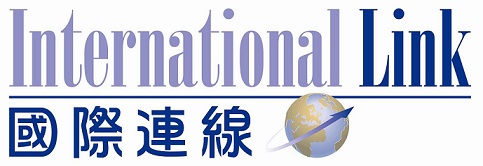太陽般的喜悅形象
太陽般的喜悅形象
Beaming Image of the Sun
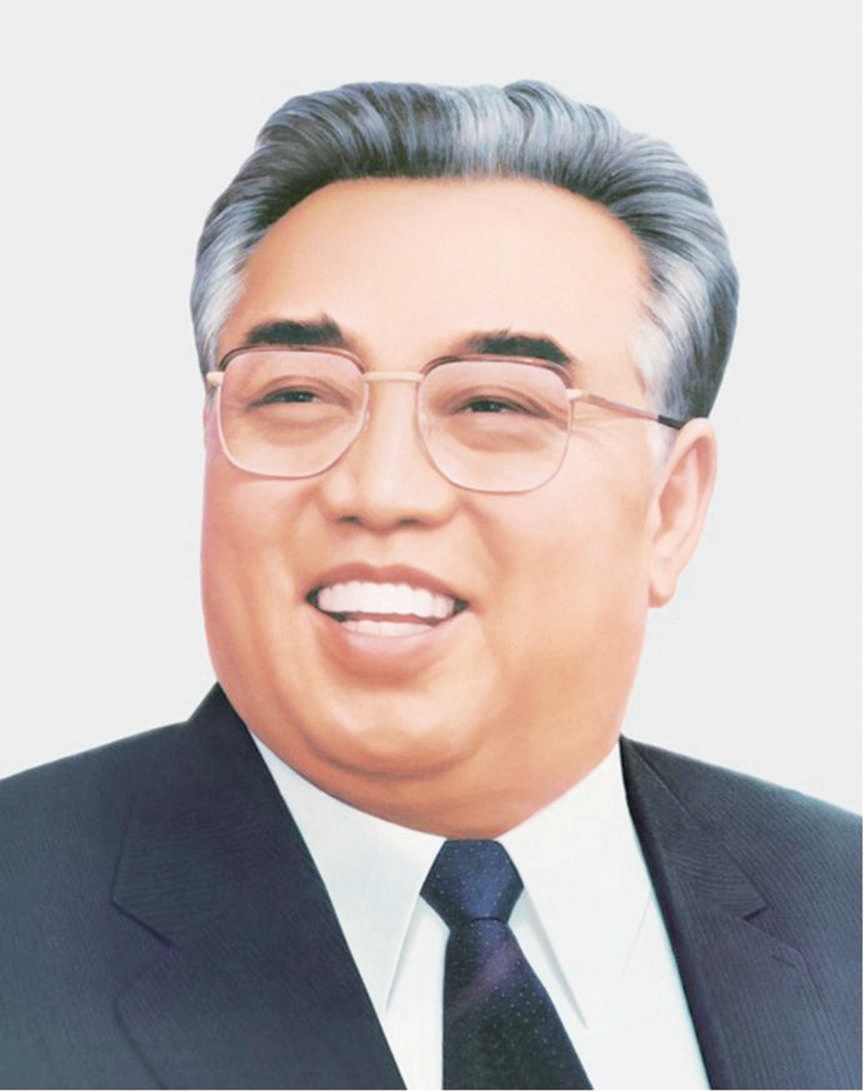
In the Democratic People’s Republic of Korea, everyone can easily see the image of eternal President KIM IL SUNG (1912-1994) smiling as brightly as the sun. The people wear a badge bearing the beaming image of KIM IL SUNG.
His smile reflects his satisfaction and pride that he had done everything he could do as a human being and as a statesman.
During the Japanese military occupation of Korea (1905-1945) in the early days of the 20thcentury, he was born into a poor peasant family. Having set out on the revolutionary struggle in his teens he authored the Juche idea and the Songun idea, ideas of great significance for the Korean revolution and the cause of independence of mankind. During the long period of leading the revolution, he energetically conducted ideological and theoretical activities, developing those ideas into encyclopedic guidelines in the struggle for independence, liberation and socialism and into a spiritual wealth common to mankind.
He brilliantly led the Korean revolution along the road to victory and gave a strong impetus to the cause of independence of mankind. He accomplished the cause of national liberation (August 15, 1945) by conducting a 20-year-long anti-Japanese revolutionary struggle, and founded the Workers’ Party of Korea (October 10, 1945), organizer and guide of all victories of the Korean people. He successfully carried out the anti-imperialist, anti-feudal democratic revolution and, on the basis of it, founded the Democratic People’s Republic of Korea (September 9, 1948), the first people’s democratic state in the East. He led the Korean war (1950-1953) to victory by defeating the US-led allied imperialist forces. After the completion of postwar rehabilitation and reconstruction and the socialist revolution, he organized and guided socialist construction of several stages, thus building the DPRK into a powerful socialist country, independent in politics, self-supporting in the economy and self-reliant in national defence. He performed undying exploits in carrying out the cause of reunification of the Korean nation by putting forward several proposals such as the three principles for national reunification, the plan for founding the Democratic Federal Republic of Koryo and the ten-point programme of the great unity of the whole nation, all called the three charters for Korea’s reunification. He also rendered great contributions to accomplishing the cause of global independence through energetic activities for the unity and development of the world socialist movement and the non-aligned movement.
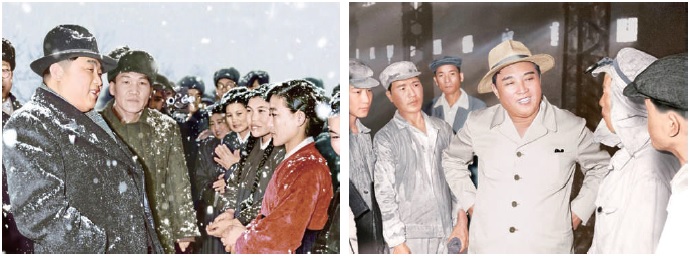
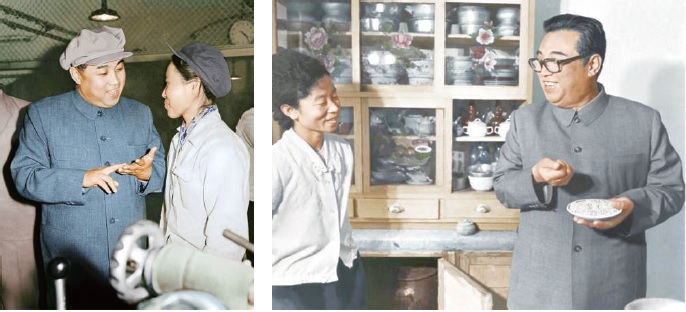
His ennobling humanity grasped the hearts of all the people. Those who had met him, be they Koreans or foreigners, became fascinated by him and cherished the feeling of worship towards him in spite of themselves, transcending differences in political view and religious belief. Luiser Rinzer, a prominent German authoress and a devout Catholic believer, praised him as a “divine being whether he liked it or not.” Jimmy Carter, former President of the US, stated that President KIM IL SUNG was greater than George Washington, Thomas Jefferson and Abraham Lincoln, the most illustrious early US presidents, all combined.
The beaming image of KIM IL SUNG is expressive of his confidence and optimism in the bright future of socialist Korea.
His ideology and cause were brilliantly inherited by KIM JONG IL (1942-2011), eternal Chairman of the National Defence Commission of the DPRK. KIM JONG IL systematized and developed in a comprehensive way the Juche idea and the Songun idea authored by the President so as to ensure that it shone brilliantly as an ever-victorious revolutionary theory guiding the cause of independence of the masses. In the closing years of the previous century, when the socialist cause in the DPRK was experiencing the worst trial owing to the intensive anti-socialist offensive by the US-led imperialist allied forces after the demise of President
KIM IL SUNG, KIM JONG IL, holding the banner of Songun higher, led to victory the anti-imperialist, anti-US showdown as fierce as a war, thus staunchly defending socialism; he not only unfolded a grandiose plan for building a thriving socialist country but also led the people to providing a springboard for its execution. Under his wise leadership, the DPRK attained the status of a space power and a nuclear power. KIM JONG IL formulated the lines and proposals for independent national reunification advanced by KIM IL SUNG as three charters for Korea’s reunification and set up a new milestone for national reunification under the idea of By Our Nation Itself. Through adroit diplomatic strategies and energetic external activities, he rendered a great contribution to advancing the world socialist movement, securing peace and security in Northeast Asia and the rest of the world, and implementing the cause of anti-imperialist independence.
Today, the cause of independence, Songun and socialism is being steadfastly carried forward by KIM JONG UN. Having been brought into the limelight of the international society as a young leader, KIM JONG UN, in just over four years after the demise of KIM JONG IL, has achieved eye-opening successes to the wonder of the world while resolutely frustrating the challenges of the US-led hostile forces: the Masikryong Ski Resort, Munsu Water Park, Rungna People’s Recreation Ground, Mirim Riding Club, Mirae Scientists Street, Sci-Tech Complex and many other structures of lasting significance have been built in various parts of the country, two application satellites have been launched and an H-bomb test was conducted with success.
With the daily-changing looks of the DPRK that is leaping forward towards the status of a thriving socialist state, the beaming image of President KIM IL SUNG will shine for ever.
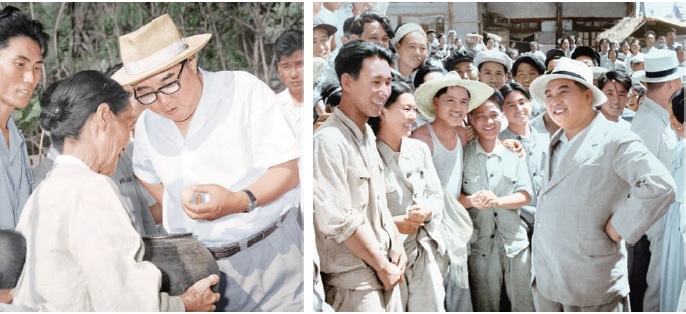
Kim Il Sung’s Reverence for the People
As Christians revere God, Kim Il Sung, the founder of the socialist Korea, respected the people throughout his life. For him, the people were the almighty beings and the wisest teachers.
From the first days when he embarked on the road of revolution to win back the country from the Japanese military occupation (1905-1945), he keenly felt the greatness of the people many times.
It happened when he was waging the anti-Japanese armed struggle in a guerrilla base along the Tuman River on the side of Northeast China.
In 1934 the Japanese imperialists threw 5 000 troops, guns and even planes into the attack of the Xiaowangqing guerrilla base. However, the number of the guerrillas defending the base was smaller than one percent of the number of enemy and, moreover, they were scantily armed with rifles and light machine guns. In this critical time the people in the base helped Kim Il Sung to find a way to defend the base. They turned out in a do-or-die struggle against the Japanese troops. Encouraged by their will of resistance, he mobilized all the guerrillas and the people to the battle in defence of the base. The joint resistance struggle of the army and the people brought about a miracle of winning the battle.
As he firmly believed in the great strength of organized people, Kim Il Sung made a plan for enlisting all the people in the final offensive to destroy Japanese imperialism which was boasting of being the “leader of Asia.” According to the plan, an all-people resistance was to be waged in step with the general offensive by the Korean People’s Revolutionary Army.
Victory in the Korean war (1950-1953) in which the DPRK repulsed aggression by the imperialist allied forces can be called a miracle he created by mobilizing the strength of the people. The inexhaustible strength of the people single-mindedly united around Kim Il Sung realized the historic task of socialist industrialization in a short period of 14 years and turned the DPRK into a powerful socialist state, independent, self-sufficient and self-reliant in defence.
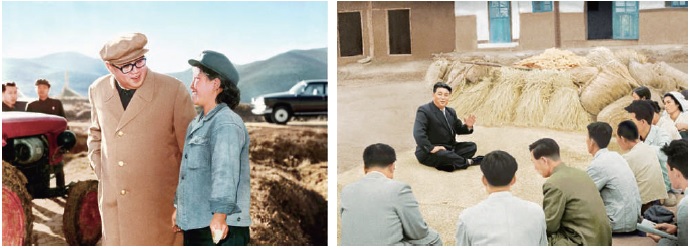
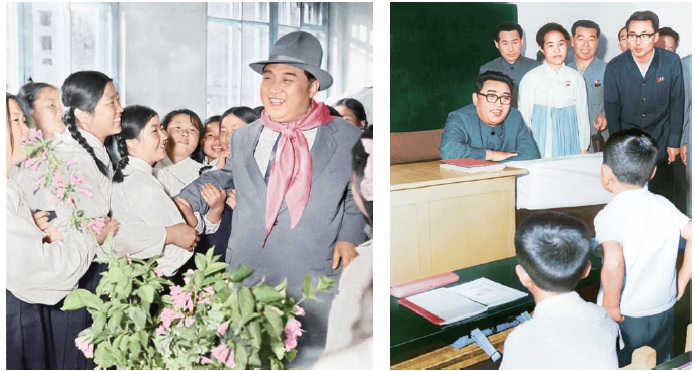
Kim Il Sung devoted his all to the people.
Kim Il Sung accepted the intentions and requirements of the people as the most sacred. After the war an old man wrote a letter to him. The letter read in part: From ancient times Pyongyang has been called Ryugyong in the sense that it is a city of willows; I don’t understand why they are planting other species of trees than willows in the streets. After reading the letter, Kim Il Sung took measures of planting a large number of willows in the streets of Pyongyang.
Shortly after Korea was liberated, there was only a few steel works that were operating. But he ordered to blow up a production process of a steel works because it was harmful to the lives and health of the workers.
When he visited the then Pyongyang Silk Mill, the workplace was full of steam as the workers were repairing pipes. Seeing this, he said: We should provide the workers with good working conditions; we will build a new factory for them. Then he convened a conference, saying that it was important to take account of the opinions of the workers, the masters of the factory. At the conference he said: We should not spare money for workers; the construction cost should be calculated after the construction of the factory was completed and everything that was needed for the workers was provided.
In order to resolve the food problem for the people, he did not mind looking round a tideland along a muddy road or visiting out-of-the-way mountainous villages.
He was always among the people and closely examined their voices, breath, eyes, expressions, speeches and behaviours, so as to catch the sentiments of the times and demands of the people and formulate new policies by reflecting them.
All the state policies in the DPRK including the universal free medical care, compulsory education system, recuperation and relaxation system and that of providing people with dwelling houses free of charge are fruits of his political ideal of regarding the people as his God.
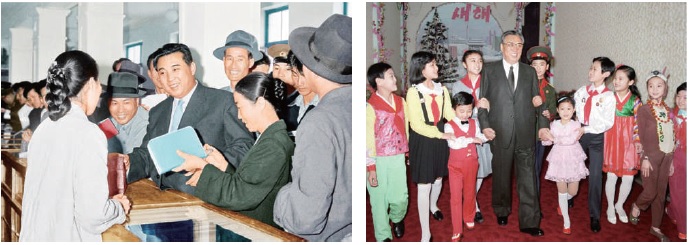
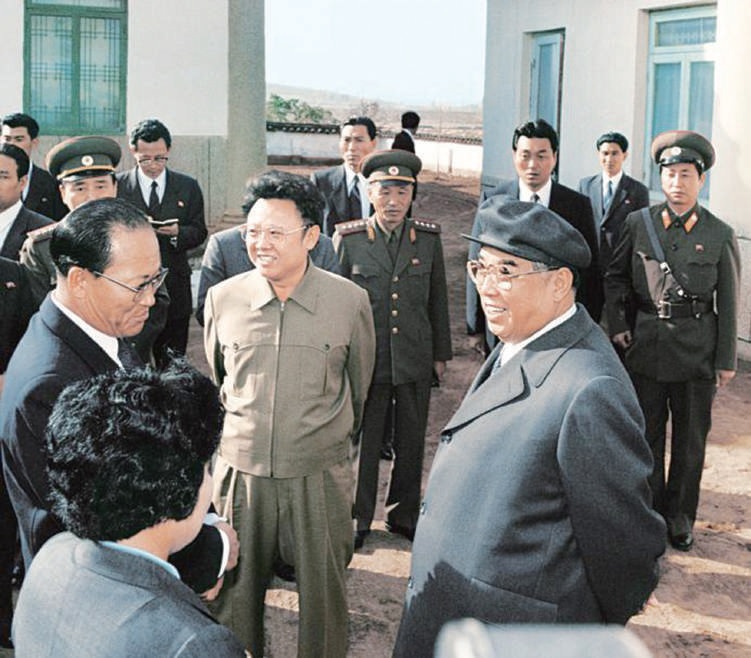
Source: Consulate General of the Democratic People’s Republic of Korea in Hong Kong
- Log in to post comments
